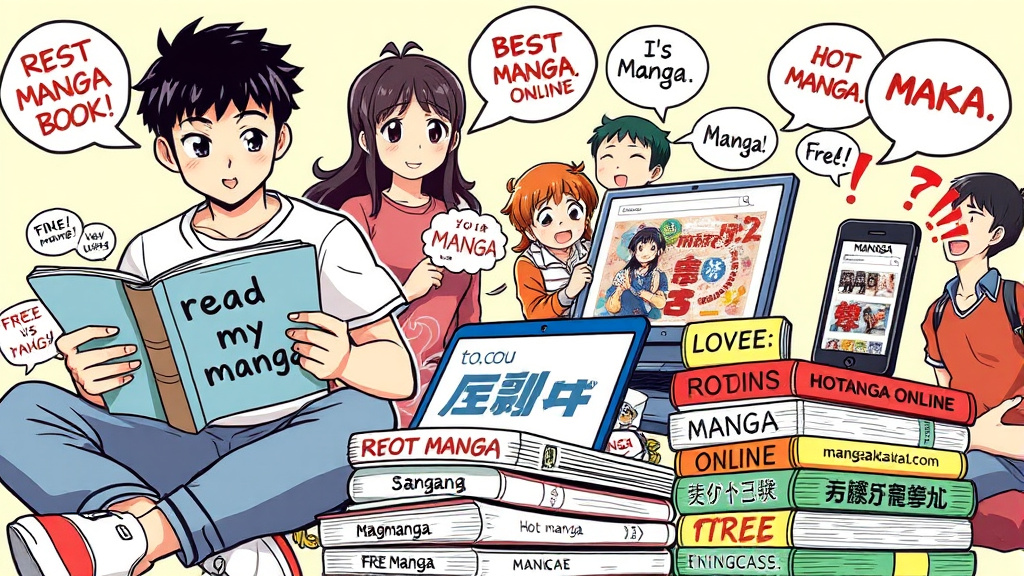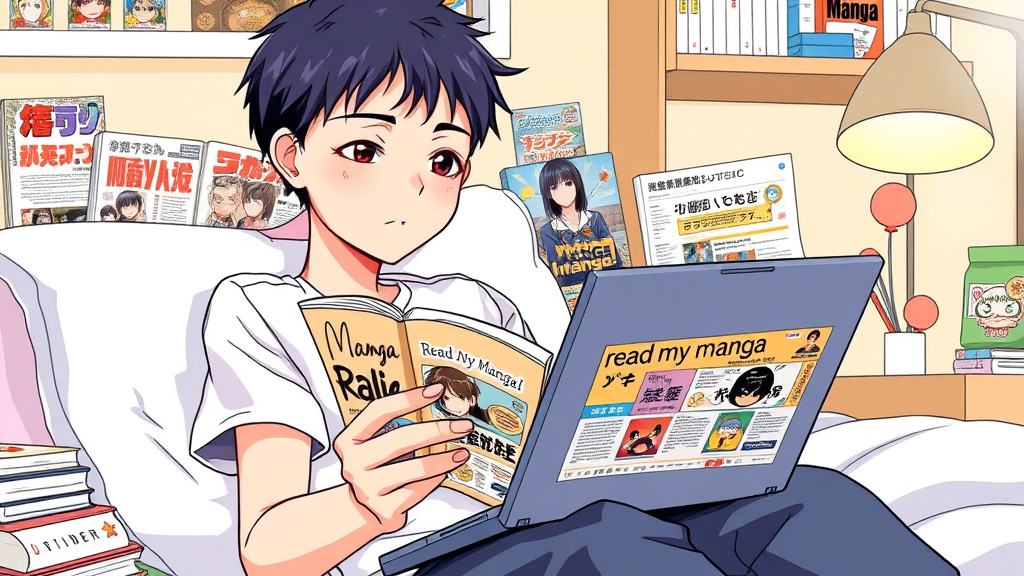manga one stands as a cornerstone of Japanese pop culture and a vibrant segment within global entertainment. It encompasses a diverse array of styles, genres, and storytelling techniques that have captivated audiences for generations. From epic adventures to poignant dramas, manga one offers something for everyone, fostering a dedicated community of fans worldwide. As a compelling artistic and narrative medium, manga one continues to evolve and influence countless aspects of entertainment, making it an essential topic to explore for anyone interested in visual storytelling and cultural trends.
The Enduring Appeal of Manga: An Introductory Overview
Manga has maintained its popularity for well over a century, rooted in a long-standing tradition of Japanese comic artistry that has seamlessly blended local culture with universal themes. Its appeal lies in the ability to evoke emotional responses through intricate artwork, compelling characters, and layered storytelling. What makes manga one particularly interesting is its accessibility—appealing to people of all ages—and its capacity to reflect societal issues, personal struggles, and aspirational dreams. This universality ensures that manga resonates across different cultures, further fueling its global proliferation.
In recent years, manga's enduring appeal can also be attributed to its adaptability across various media, from anime adaptations to live-action films. Its format allows creators to experiment with diverse genres, including action, romance, horror, and science fiction, making manga a versatile art form. This flexibility enables manga one to stay relevant, attract new audiences, and continually reinvent itself while maintaining its core traditions. The cultural richness and storytelling depth make manga more than just entertainment—it's a mirror reflecting societal values, aspirations, and the universal human condition.
 Hình minh họa: manga one – sexiest manga
Hình minh họa: manga one – sexiest mangaDefining Manga: Key Characteristics and Distinctions
Manga is often distinguished by its unique visual style—characterized by expressive faces, dynamic action sequences, and meticulous paneling—that sets it apart from Western comics. Unlike Western comic books, manga is typically published in black-and-white, emphasizing line work and shading that lend a distinctive aesthetic. Its storytelling approach often involves serialized formats, with chapters released regularly in magazines before compiling into tankobon volumes, fostering a strong sense of anticipation among readers.
Furthermore, manga tends to explore complex themes and character development within its narratives. Its pacing can be deliberately slow or intensely fast, depending on the genre and story arc, allowing for deep immersion into the characters' inner worlds. The distinctions also extend to cultural nuances—manga often incorporates Japanese social values, language, and symbolism, which add layers of meaning. Yet, despite these cultural specifics, manga's themes of love, conflict, identity, and morality are universal, making it accessible and appealing to a global audience.

One Piece: A Case Study in Manga's Global Success
One Piece exemplifies the power of manga one to transcend cultural boundaries and achieve international acclaim. Created by Eiichiro Oda, this manga chronicles the adventures of Monkey D. Luffy and his crew as they seek the legendary treasure, One Piece. Its enthralling narrative, memorable characters, and intricate world-building have captivated millions worldwide, fueling a dedicated fan base across continents.
What sets One Piece apart is its masterful blend of humor, action, and emotional depth, which appeals to a broad demographic. Its success is amplified by strategic licensing, anime adaptations, and merchandise, but at its core, it maintains a compelling story that invites inquiry into themes of friendship, dreams, and perseverance. The global reach of One Piece highlights how manga one, when combined with quality storytelling and relatable characters, can captivate audiences far beyond its Japanese origins, turning it into a cultural phenomenon and a benchmark for manga's international impact.
The Art of Storytelling: Narrative Techniques in Manga
Manga excels in its narrative versatility, often employing innovative storytelling techniques that enhance reader engagement. Visual storytelling is at the heart of manga, with panel layouts carefully designed to manipulate pacing, mood, and emphasis. Techniques such as "speed lines" for dynamic action scenes or "panel cropping" to heighten suspense demonstrate the medium's creative potential to convey emotion and intensity effectively.
Beyond visuals, manga authors utilize literary devices such as foreshadowing, symbolism, and internal monologues to deepen narrative complexity. This narrative craftsmanship allows for multi-layered stories that resonate emotionally and intellectually. For example, character development often involves subtle storytelling cues—like expressive eyes or body language—that communicate internal conflicts without direct exposition. The interplay of art and writing in manga one invites readers into immersive worlds where every panel contributes meaningfully to storytelling, establishing a unique conversational rhythm between creator and audience.
Manga Genres and Demographics: A Diverse Landscape
Manga's diversity stems from its wide range of genres, each catering to different demographic groups and tastes. Kodomomuke (children's manga) features playful stories with educational themes, while shonen (young boys) focus on adventure, rivalry, and heroism, exemplified by series like Naruto. Shojo (young girls) often explores romance, personal growth, and emotional relationships, as seen in works like Ouran High School Host Club or Nana.
Seinen and josei manga target older audiences—seinen with mature themes, complex narratives, and darker tones, while josei often delves into adult women’s lives, careers, and relationships. This broad demographic spectrum ensures that manga offers stories that can challenge, entertain, and relate to readers at every stage of life. The richness of genres—from supernatural horror to slice-of-life dramas—reflects the flexible storytelling inherent in manga one, making it a truly inclusive medium that celebrates diversity and individual expression.
The One-Shot Manga: A Unique and Focused Art Form
One-shots are brief, self-contained manga stories that usually span only a few pages to a single chapter. They serve as a testing ground for new ideas or emerging artists, offering a compact yet impactful storytelling format. This art form allows creators to experiment with themes, art styles, and narrative techniques without the long-term commitment of serialized manga, encouraging innovation and fresh perspectives within the manga world.
Despite their brevity, one-shots often demonstrate a high level of creativity and storytelling finesse. They can encapsulate powerful emotional moments or deliver concise satirical commentary with precision. For readers, one-shots provide quick, satisfying stories and insight into new talents or prelude to larger works. For creators, they are an invaluable tool for honing skills, exploring new genres, and gaining recognition, making one-shots a crucial component of manga's artistic ecosystem.
Manga's Influence on Animation and Live-Action Adaptations
Manga has profoundly influenced animation through the vast production of anime—animated series and movies based on manga stories. This synergy amplifies manga's storytelling reach, bringing dynamic visuals and voice acting to beloved characters. Some adaptations, like Attack on Titan or Demon Slayer, have garnered global audiences, further elevating the original manga's popularity and sales.
In addition to anime, manga also serves as source material for live-action films and television series. Adaptations like Rurouni Kenshin or Nana have introduced manga stories to new audiences and challenged creators to translate static images into real-world performances. These adaptations often generate excitement and commercial success, but they also pose artistic and cultural challenges—preserving the original tone and fidelity while making the story suitable for live-action. The influence of manga on evolving media forms underscores its central role in shaping modern visual storytelling across platforms.
The Business of Manga: Publishing, Distribution, and Licensing
The manga industry operates as a complex ecosystem—from publishers and creators to distributors and international licensors. Japanese publishers like Shueisha, Kodansha, and Shogakukan lead the market, managing serialized publication schedules and licensing intellectual property rights. Their strategic marketing, digital platform integration, and international licensing have enabled manga one to reach a global audience efficiently.
Global distribution relies heavily on digital platforms like VIZ, Manga Plus, and Crunchyroll, which provide easy access to a broad selection of manga titles. Licensing agreements often include anime, merchandise, and translation rights, revealing a lucrative business model that balances creative integrity with commercial interests. However, this system also faces challenges—such as piracy, cultural translation, and maintaining creator rights—requiring industry adaptation and innovation. As the manga market continues to expand worldwide, understanding its business dynamics reveals insights into how this culturally rich medium sustains itself economically and creatively.
One Piece and the Shonen Jump Formula: A Winning Combination
The confluence of One Piece with Shonen Jump exemplifies how targeted editorial strategies can produce enduring success in manga. Shonen Jump, as Japan’s premier manga magazine, has historically championed dynamic series aimed at young boys, with a formula emphasizing adventure, humor, and character growth. One Piece’s alignment with these principles fostered a massive readership and sustained long-term serialization.
This magazine-creator relationship exemplifies the importance of community-building, marketing, and timing. Serials like One Piece benefit from the magazine's reputation, regular audience engagement, and multiple media tie-ins. The success of such collaborations highlights how understanding audience demographics and maintaining high-quality content can create iconic franchises that dominate both local and international markets. The ongoing popularity of One Piece demonstrates how a winning formula—creative storytelling paired with strategic publishing—can cement a series' place in manga history.
The Future of Manga: Digital Platforms and Global Reach
Digital transformation is revolutionizing the landscape of manga publication and consumption. Platforms like Manga Plus, VIZ, and Webtoon have lowered barriers for readers worldwide, offering instant access to thousands of titles and facilitating real-time updates. This shift not only broadens manga's audience but also enables creators to publish independently, bypassing traditional gatekeepers and fostering diversity of voices and styles.
Looking ahead, the future of manga one seems poised for even greater global integration. As cultural exchange accelerates, manga will continue to evolve through international collaborations, translation innovations, and interactive media, including augmented reality and virtual reality formats. The increasing acceptance and celebration of diverse stories will lead to more inclusive content that resonates with a global demographic. The ongoing incorporation of digital tools and platforms promises to democratize manga creation and distribution, ensuring its relevance and vibrancy for generations to come.
Conclusion
The enduring appeal and global influence of manga one are rooted in its artistic innovation, narrative richness, diverse genres, and adaptive storytelling techniques. As exemplified by success stories like One Piece, manga's ability to blend cultural specificity with universal themes has fostered a worldwide community of passionate fans and creators. Its influence extends beyond print into animation, live-action adaptations, and digital platforms, shaping the future of entertainment. As technological advancements continue to reshape the industry, manga remains a vital and evolving cultural phenomenon—an artistic expression that is both rooted in tradition and forward-looking in scope, promising continued growth and relevance across the globe.





